Let’s not break out the champagne but there was a bit of relief of the second derivative variety for global PMIs last night with the rate of decline for most slowing in December. Let’s begin with the core of the problem, Europe:
The Flash Eurozone PMI Composite Output Index was at 47.9 (47.0 in November). A 3-month high. The Flash Eurozone Services PMI Activity Index was at 48.3 (47.5 in November). A 3-month high. The Flash Eurozone Manufacturing PMI was at 46.9 (46.4 in November). A 2-month high.
Here’s a chart of the composite versus GDP:
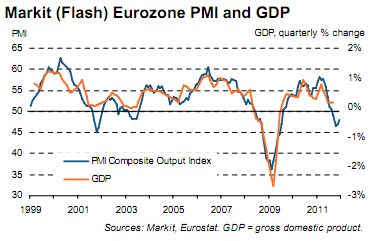
By country:
…Germany saw modest growth of output, reversing the decline seen in November. The rate of contraction in France slowed to a marginal pace. Both countries saw manufacturing output continue to fall, albeit at reduced rates. Elsewhere in the Eurozone activity fell sharply, declining at a rate only marginally weaker than November’s two-anda-half year record. This was led by an accelerated rate of decline in the service sector.
Here’s the chart:
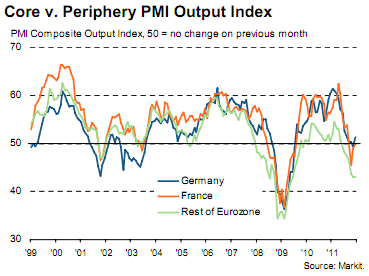
We can’t say yet if this result represents a change in trend. The reversal for France is certainly impressive but not decisive. Germany’s shift is a blip and the periphery remains locked in various stages of depression. Even if it’s better than I was anticipating, the ongoing financial crisis is a void none in Europe will escape.
We also got the HSBC China Flash PMI which was at 49.0 (47.7 in November). A 2-month high. The components showed some rebound in local orders but increasing weakness in exports:
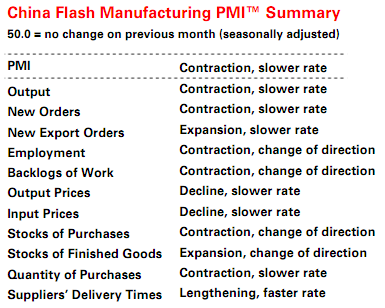
And the chart:
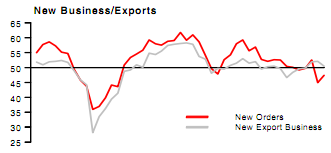
In the US, we say the release of the Philly and Empire Fed manufacturing indexes. Both printed stronger number for December. First the Empire:
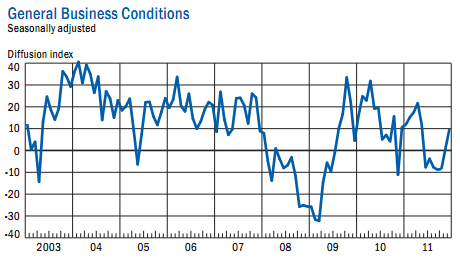
As you can see, in the bigger picture, the trend for the index is still in decline. However, the index was up across the board and especially strong in the six month leading indicators. In normal circumstances you might be tempted to conclude that the US has a sustainable if slow recovery going here.
The same signal came from the Philly Fed with current activity jumping and six month projected activity surging even more:
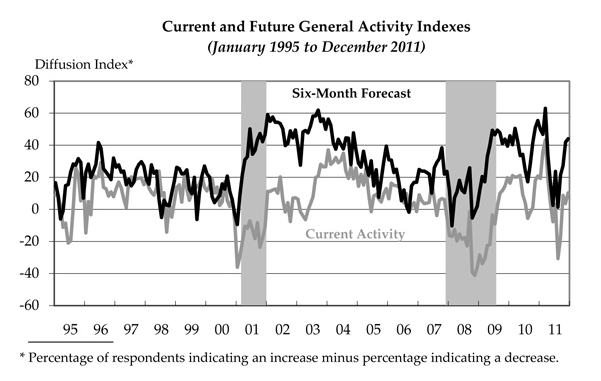
This US mini cycle is gaining some momentum. Calculated Risk reckons these regional PMIs are pointing at a US ISM in the mid fifties. In normal circumstances, this data, combined with the news that the Congress is likely to extend payroll tax breaks into 2012, cutting the potential fiscal consolidation scheduled for next year in half (to 0.75% of GDP), would definitely prompt me to back away from my US recession call of several months ago. I’d say the US could keep this up and slowly grind out its swoosh shaped recovery.
But, the European recession and, more to the point, lack of resolution in its financial crisis, means I still can’t do that as the $US has broken into a clear new uptrend, which will choke the US recovery in time, and the danger of contagion flowing to US banks is growing.
What I can say, however, is that if the US does head back towards recession in 2012, it won’t really be its own fault.

